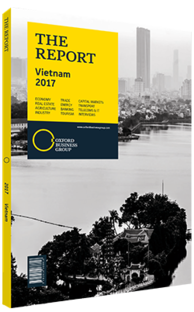Multinational organisations become more focused on transfer pricing and Customs in Vietnam
Solid economic growth, low-cost manufacturing, a large consumer base and continued positive legislative reform, have combined to make Vietnam an increasingly attractive investment destination for multinational organisations. Strong foreign investment and rising international trade has resulted in the tax authorities focusing more on cross-border inter-company transactions. Investors must be aware of complex Customs valuation and transfer pricing issues, fast-changing regulations and practice, as well as an increasing scrutiny of related-party transactions by tax and Customs authorities.
New Customs Rules
With the introduction of new Customs regulations effective from January 1, 2015, organisations have been given more flexibility to conduct their business activities. At the same time, there is a shift towards application of risk management criteria and more post-clearance inspection activities to monitor the compliance of entities with Customs regulations. One of the Customs issues enterprises with cross-border inter-company transactions frequently face is valuation. The dutiable value for imported goods in a non-related party transaction is typically the transaction value. For the transaction value in a related-party transaction to be accepted as the dutiable value, certain conditions must be met. One of those conditions is that, “the special relationship does not influence the transaction value”. In practice, demonstrating this often presents a challenge. In a post-clearance inspection or audit, Customs authorities scrutinise the special relationship between buyer and seller and seek to reassess the dutiable price using their own pricing database. Having proper transfer-pricing documentation in place does not help in post-clearance inspection.
Another common issue is related to royalties or licence fees. These fees shall be added to the dutiable value of the imported goods if they fall under certain circumstances. In practice, there is often debate as to whether such amounts shall be added on to the dutiable value. Also, since these fees are often not incurred at the time when import duty is assessed/ payable, the question is how companies can declare and pay Customs duty on such fees. During post-clearance audits, the Customs authorities are focused on reviewing royalty and licence agreements, as well as trying to assess additional import duty.
Transfer Pricing
The valuation issue goes hand in hand with transfer-pricing issues. The acceptability of transfer prices for income tax purposes does not automatically establish the acceptability for Customs purposes and vice versa. While the tax authorities may establish that an inter-company transaction at a lower import price is acceptable for income tax purposes, the Customs authorities may deem a higher dutiable price for Customs purposes to collect more import duty. Also, while the Customs authorities may add royalty or licence fees to the dutiable value of goods, this does not automatically mean that the tax authorities will accept the arm’s length nature and the deductibility of such expenses.
Even though there have been limited transfer pricing audits, the government has tried to develop the regulations to align with international standards, with the latest milestone being the establishment of regional transfer pricing audit teams.
In February 2017 Vietnam’s Ministry of Finance released a new transfer-pricing decree which represents the most important development of the transfer-pricing regime in the last 10 years. The decree introduces the substance-over-form concept and, in line with the changing global landscape on transparency and anti-tax avoidance, a three-tier transfer-pricing documentation consisting of a master file, local file along with country-by-country reporting.
You have reached the limit of premium articles you can view for free.
Choose from the options below to purchase print or digital editions of our Reports. You can also purchase a website subscription giving you unlimited access to all of our Reports online for 12 months.
If you have already purchased this Report or have a website subscription, please login to continue.

